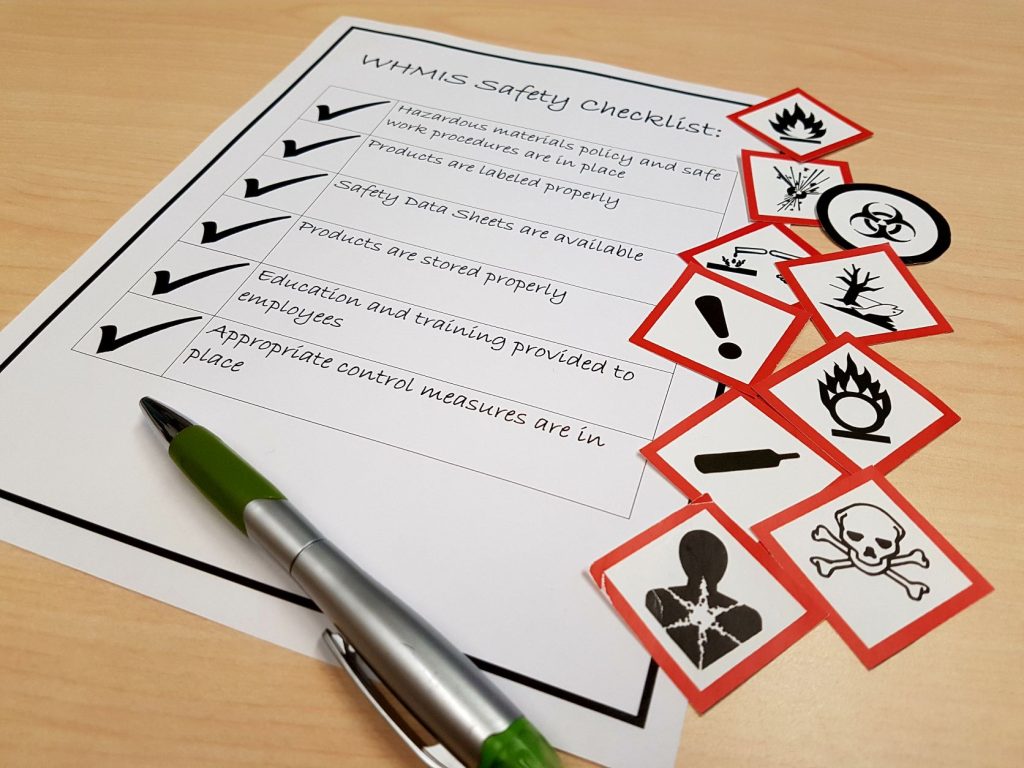Employee training can be challenging, but the results benefit organizations tremendously in the long run. Implementing a well-structured training program will ensure that your employees have access to the best resources and opportunities for their growth and development.
Employee Training Checklist
Sometimes, a checklist is all you need to streamline the training program and ensure that all activities take place in a timely manner. Following a new employee training checklist will boost the productivity and performance of your employees. You will be able to cover all the essentials required for a positive training experience.
1. Start communicating before the first day
You have to engage the new employees even before they step into the office so they are excited about their first day. Consistent communication will indicate to the new hire that you are looking forward to their arrival. They can also get their doubts and questions out of the way which will increase their comfort level for the upcoming training program.
2. Finish paperwork early
Paperwork can be boring and tedious, which can take employees’ minds off the actual training that matters. Get the administrative tasks out of the way so that they can move on to more engaging and interesting activities.
3. Introduce them to their peers and seniors
For an employee to do their job properly, they have to connect and collaborate with others at the workplace. It is only through effective communication that they can understand how they fit into the company. Introducing them to their colleagues and senior members of the company will make them feel welcome and ready to hold conversations on their own. Peer mentoring is an excellent employee training tool, but only 32% of companies include it in their onboarding program according to a Kronos survey.
4. List individual training needs
Every employee has different strengths and weaknesses and an ideal training program has to take all of them into account. Certain employee training topics are universal, but they are not sufficient for fully training an employee. You have to assess the training needs of every individual employee and deliver lessons via their preferred mode of learning and communication.
You can ask new hires what type of skills they want to develop and their future goals in an onboarding survey. This will also help new hires understand that you are interested in their growth.
5. Invest in employee training
Formulating the perfect employee training plan is just the first step. You have to invest time and money into its implementation to ensure that your employees have access to the best resources. HR leaders are now beginning to understand the importance of onboarding in proper employee training this area and 30% of them are planning to increase their onboarding budget. Many organizations fail to understand that employees cannot fulfill their own training needs for a particular role within the company. Investing in employee training is the equivalent of investing in the long-term growth of the organization. As per the LinkedIn Learning Report 2020, 94% of employees would stay at a company longer if they invested in learning and development.
6. Prioritize software training
Organizations, in their effort to utilize the benefits of advancing technology, are now using multiple software platforms in their day to day work. Software training has become a necessity because new employees are becoming increasingly frustrated with learning and troubleshooting software. Lack of software training can cause employees to disengage from work and suffer burnout.
The modern digital workplace requires all employees to be technologically adept. Digital learning solutions allow employees to master new software swiftly and effectively. Learning platforms like Bites encourages you to make short training videos demonstrating the use of software in real time with a voiceover. Employees can remember the instructions and follow along to speed up the learning process.
7. Do not dismiss soft skills training
It seem like a trivial addition to a training program that deals in technical prowess, but soft skills training is essential for new employees so they know how to communicate effectively within the workplace and establish themselves as an approachable and friendly co-worker. Employees also have to rely on soft skills when handling customers and clients.
8. Measure the effectiveness of the training program
Once you implement a training program, the onus is on you to check whether it is delivering results. It is important to measure the effectiveness of your training program so you can identify areas of improvement and keep updating it accordingly. Monitor a few key metrics to check whether an employee has improved because of the training in terms of skills and efficiency. Ask for their feedback irrespective of whether the result is positive or negative.
How to create a training plan for new employees?
New hire training is usually elaborate, and you have to keep track of several elements.
A new hire training plan outlines the process or processes by which new team members can be trained and onboarded into the company. The plan should help them understand their role and the tools they need to do their job properly. It is helpful because it allows you to focus on the most important aspects of the program without losing track of the goal. A strong training plan will prevent unnecessary delays and misunderstandings.
You can follow these steps for developing a new employee training program that is effective and result-oriented.
1. Consult your existing employees
It is easy to overlook existing employees as a source of information regarding your new training program. However, the truth is that they will be able to give you the best suggestions on how to improve your new hire training plan because they have already experienced it. Consult your employees about training gaps but also ask them what you did right.
2. Switch to flexible, task-focused training
Traditional training programs tend to be rigid and unsuitable for the fast-changing business world of today. Flexible and dynamic training that can be adjusted based on market developments and individual employee training needs is ideal. You have to adapt the training program based on the strengths and weaknesses of the new hires while also covering all the basics in detail.
A task-oriented approach is best because it will allow them to get started with their job responsibilities and learn further through practical experience. It is important to remember that training is an ongoing process, and you have to check in with the new employees regularly to ensure that they are on track.
3. Consider team-level training
One of the best ways to train employees is to teach them as a group. Team-level training allows employees to understand the work environment better and they are able to adapt depending on the team’s workflow. Once they figure out their role within their team, they will be able to satisfy expectations and fulfill their work diligently. It will also allow you test out whether an employee is better suited to another team.
4. Take preferred learning methods into account
This is an adjustment that you have to make for your employees, but you will reap the benefits. The new hire training plan should accommodate various learning styles so that every employee is comfortable. Engaging employees in a way that complements their ability to learn the best will give you better results.
5. Encourage leaders and senior members of the company to contribute
New hires need the best guidance possible and you should ask senior members of the company to be mentors or teaching figures. New hires will learn more effectively from the people they look up to and they will also be able to offer fresh perspectives.
Who should train new employees?
You have to be selecting when choosing the perfect trainer for your employees. Not only should they have the requisite skills and knowledge, but they also be able to impart information in an effective manner suitable for all the learners. You can appoint senior employees, supervisors, managers and HR staff as trainers for your in-house training program. The other alternative is to hire external consultants but that will be more expensive.
Importance of a training schedule
If your employees are working while completing their training program, it is imperative for you to formulate a new employee training schedule. You can include the timings of the various training sessions so that employees can manage their time properly. Moreover, following a schedule allows employees to develop a learner’s mindset and they will pay more attention the sessions. A schedule will also give structure to the program which might otherwise be confusing or haphazard for new employees.
How long does it take to train a new employee?
The process of training new employees should not be short and lacking in depth. The training program is a part of successful onboarding. HCI finds that most organizations stop the onboarding process within a week which often leaves employees confused. The lack of access to proper resources renders them unable to execute their duties properly. One week is hardly enough time for a new employee to adjust to their new work environment and learns the ins and outs of their role. Ideally, the onboarding program should last for three months at the very last and the training can continue for a whole year if necessary to ensure that new employees do not feel neglected.
Tips for training new employees
The following tips will help you train new employees effectively.
- Your employees will be interested in the training program when they understand how it can be beneficial for them. Talk to them about how upskilling can help them climb the ranks within the company.
- When formulating your training program, make sure that it provides long-term value to the company. You have to narrow down the skills required to meet the current or future needs of the company. If the training is financially beneficial to the company, it will be much easier to view it as an investment.
- Create a culture of learning so that new employees know what is expected of them from the very first day. Encourage your employees to know their skills, master new technology, and stay on top of the game. Organizations can evolve if the employees do, so invest in the best learning resources.
- Prioritize specific universal training topics alongside individual training. Make sure that you complete the individual needs assessment before the employees join the company so you have resources ready for them.
- Encourage reskilling among your existing employees. If they learn new skills, they will be able to make the best of opportunities presented to them. Sometimes, brushing up on existing knowledge can also be helpful.
- E-learning or digital learning will help you provide consistent training to remote and on-site employees. Invest in equipment and digital learning solutions like Bites to create compelling educational content that will engage viewers even on the other side of the world. Learners are 95% more likely to retain information conveyed by video with text as compared to just text, as per the LinkedIn Workplace Report 2021.
Why Bites?
Bites is a digital learning solution developing for the modern, evolving workplace. It encourages microlearning which allows employees to consume information slowly so they can retain it longer. You can create your own very own employee training program with the help of Bites by making short videos or bites on the topics that you want to cover. You can combine these videos into one playlist and share it directly with your employees.
Video learning is engaging and lets employees connect with you directly. They can also view practical demonstrations of what they are learning in the video. The analytics dashboard will allow you to monitor the performance of your employees on Bites, and you can also organize quizzes. Bites also provides a discussion forum to give your employees the classroom experience.







